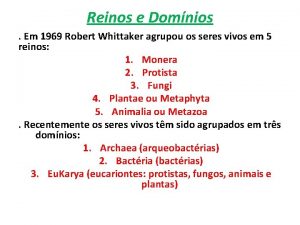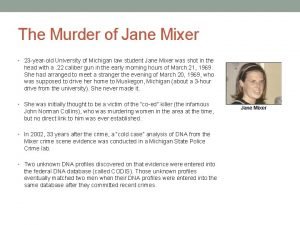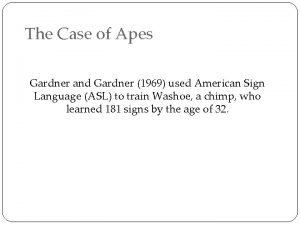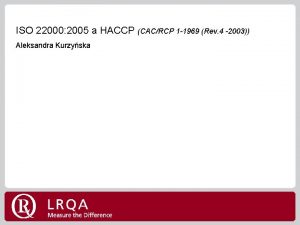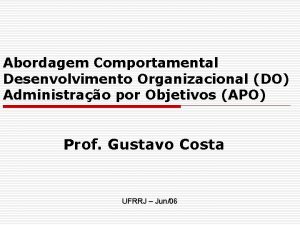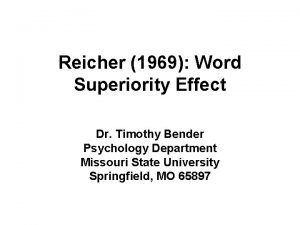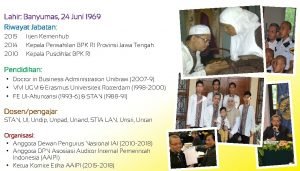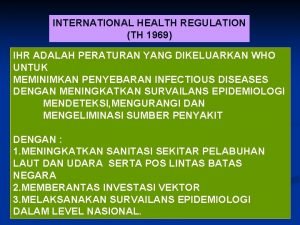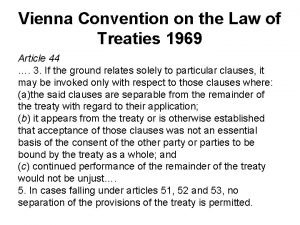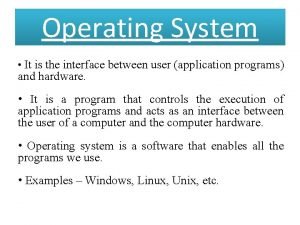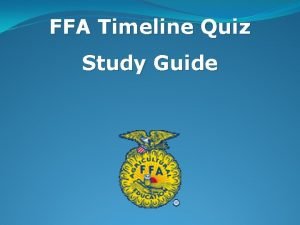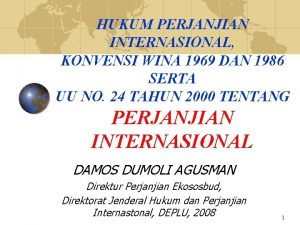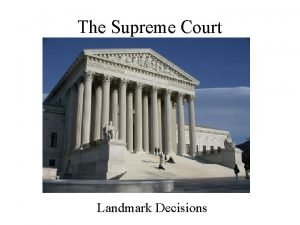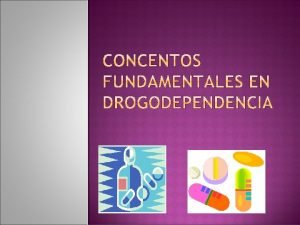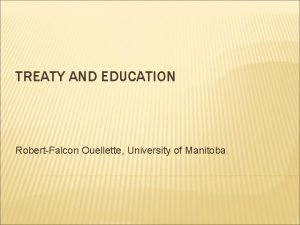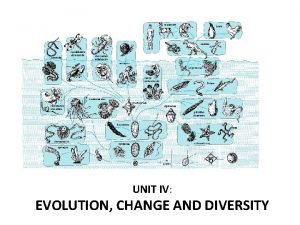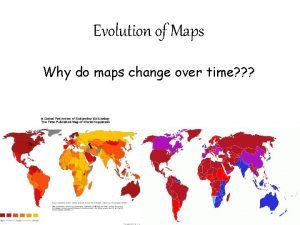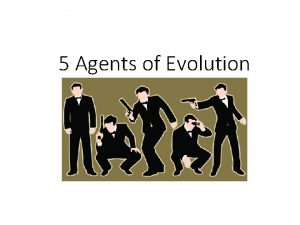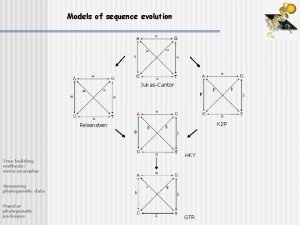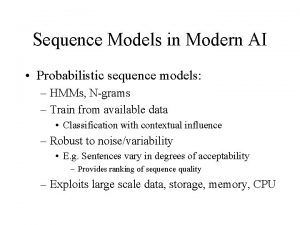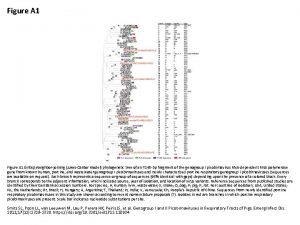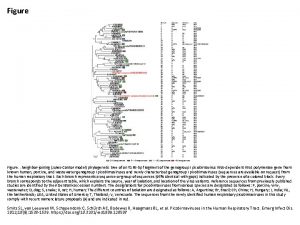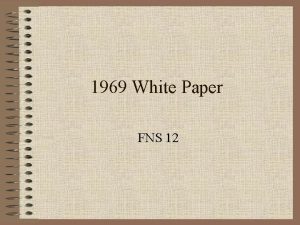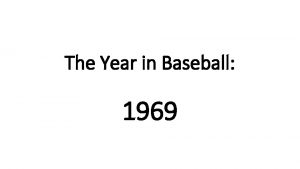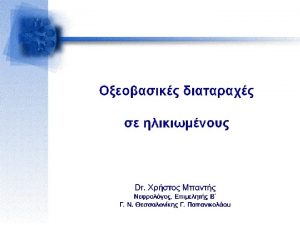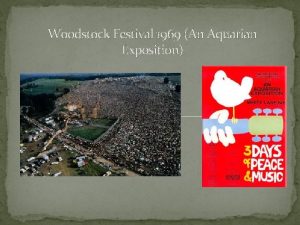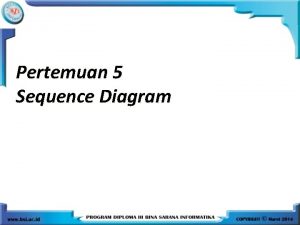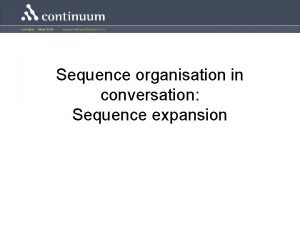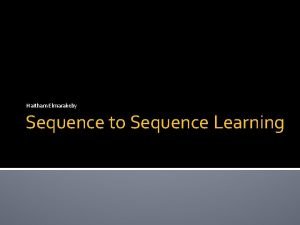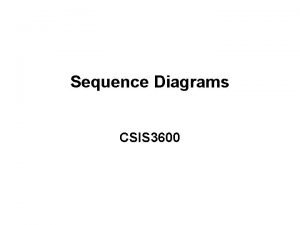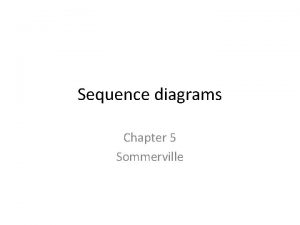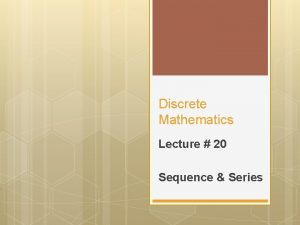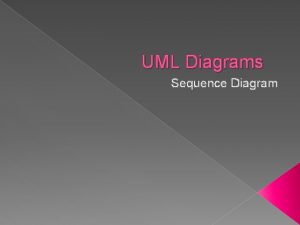Models of Sequence Evolution JC 69 JukesCantor 1969















































- Slides: 47

Models of Sequence Evolution

JC 69: Jukes-Cantor (1969) Model Assumes all bases interchange with equal probabilities, equal base frequencies

F 81: Felsenstein (1981) Model Assumes all bases interchange with equal probabilities, base frequencies may vary.

HKY 85: Hasegawa, Kishino, Yano (1985) Model Assumes unequal transition and transversion probabilities, base frequencies may vary.

REV: General Time Reversible Model Assumes unequal probabilities for all substitution types, base frequencies may vary.


Models applied to a dataset of 13 HIV pol sequences (273 nt) Model # par. ln Lik JC 69 1 -1227. 45 F 81 4 -1187. 54 K 2 P 2 -1210. 49 HKY 85 5 -1165. 70 REV 9 -1151. 63

Other Forms of Rate Heterogeneity • • • Variation from gene to gene Variation from site to site within a gene Synonymous vs synonymous rates Spatial rate heterogeneity Variation from lineage to lineage • Correlations among sets of sites

Site-to-site rate heterogeneity

Gamma models of site-to-site heterogeneity Hierarchical model: • Evolutionary rates at individual sites are drawn from a gamma distribution • Given the rate at a particular site, sequence evolution follows one of the previously discussed models Original idea: Uzzel and Corbin (1971) First likelihood treatment was by Yang (1993)


REV+G: General Time Reversible Model with Gamma Rate Heterogeneity (Yang 1993)

“All” we are doing here is integrating the likelihood function over all possible rate values, with those values being weighted according to probabilities assigned by the gamma distribution.

• Calculating the integral in the continuous case is very expensive. • Yang (1994) suggested “discretizing” the gamma distribution, and using the discrete form of the likelihood function. • The cost of calculation increases only linearly with the number of rate categories, N.



13 HIV pol sequences

4 alpha-spectrin sequences

Correlations among sites • Codons • Dinucleotides (secondary structure) General idea: move from 4 -state nucleotide models to 16 or 64 -state models.

MG 94: Muse and Gaut (1994)

GY 94: Goldman and Yang(1994)

• This approach can be combined with any nucleotide model • Rate heterogeneity can be added in the same way as with nucleotide models • Account for correlations among nucleotide sites within codons • Avoids the problematic notion of “degeneracy classes” • Necessary for rigorous estimates of synonymous and nonsynonymous substitution rates.

Muse and Gaut (1994) model

Consider the result of allowing gamma variation in rates over codons: q While they are allowed to have different magnitudes, the two classes of rates have the same distribution. q Synonymous rates are likely to be less variable over sites than are nonsynonymous rates.

Site-to-site rate variation, transitions and transversions with independent distributions A A C G T



Muse and Gaut (1994) modification

Each site in the sequence has a (random) synonymous rate, and a (random) nonsynonymous rate, drawn from some bivariate distribution, The likelihood is again integrated with respect to f:

As before, the likelihood function is discretized for computational feasibility: The discretization process can be tricky in general. In all that follows, we assume that are independent gamma random variables, which allows discretization of each axis separately.




Goals of molecular evolutionary analyses • Understand the structure of – Are parameter values (i. e. , rates) equal among different branches? – Is the structure of (e. g. , TS/TV ratio) the same for different branches? – Are the values of such parameters “related” among different genes?

Likelihood function for homologous DNA sequences x A B G is the collection of all parameters affecting the evolution of sequences A, B, and G. is the collection of all data (sequences A, B, and G).

Relative Rate Tests Are evolutionary rates the same along two lineages? A B G

Versions of the relative rate test • Distance based (Wu and Li 1985) – For 2 clades (Li and Bousquet 1992) • Likelihood ratio (Muse and Weir 1992) • Nonparametric (Tajima 1993)

Likelihood-based RR Test A B • Maximize L assuming • Maximize L without constraints • LRT has a chi-squared distribution if rates are equal Note: Use of outgroup insures that the unknown divergence time is irrelevant. G

Distance-based RR Tests a A g b B G

Nonparametric RR Test A B G

ndh. F rbc. L Nonsyn Syn

Locus A Locus B Locus effect Lineage X Locus effect

Relative Ratio Tests • Are “branch lengths” proportional among loci? • Muse and Gaut 1997; Muse et al. 1997; Huelsenbeck et al. 1997; Yang 1995

Relative Ratio Test The null hypothesis is that the relative proportions of branch lengths are the same for all loci. The proportion need not be known a priori. 1 1 2 2 3 3 4 4



 Modals and semimodals
Modals and semimodals Fc united of manchester wiki
Fc united of manchester wiki Vanavar bush
Vanavar bush Lyndon b johnson 1969
Lyndon b johnson 1969 Fra creed
Fra creed Parts of the ffa emblem
Parts of the ffa emblem Whittaker 1969
Whittaker 1969 The cold war heats up: 1945 - 1969
The cold war heats up: 1945 - 1969 Nariman committee 1969
Nariman committee 1969 Gary leiterman young
Gary leiterman young Comissão natura
Comissão natura Piramida haccp
Piramida haccp 2012-1969
2012-1969 Gardner and gardner 1969
Gardner and gardner 1969 Cac/rcp 1-1969 rev 5 2020
Cac/rcp 1-1969 rev 5 2020 Beckhard 1969 desenvolvimento organizacional
Beckhard 1969 desenvolvimento organizacional 1967 1968 1969 1970 1971 1972 1973 1974 1975 1976
1967 1968 1969 1970 1971 1972 1973 1974 1975 1976 Reicher 1969
Reicher 1969 Historia internetu prezentacja
Historia internetu prezentacja 24 juni 1969
24 juni 1969 Sistemas operativos basados en unix
Sistemas operativos basados en unix Grażyna skrzypaczka zm.1969 r
Grażyna skrzypaczka zm.1969 r Chapter 26 section 2 the cold war heats up answer key
Chapter 26 section 2 the cold war heats up answer key 1969 1970 1971 1972 1973 1974 1975 1976 1977 1978
1969 1970 1971 1972 1973 1974 1975 1976 1977 1978 Ihr 1969
Ihr 1969 Theodorson and theodorson 1969 communication
Theodorson and theodorson 1969 communication Vienna convention
Vienna convention Walter gropius (1883-1969)
Walter gropius (1883-1969) Interface between user and hardware
Interface between user and hardware Copyright regulations 1969
Copyright regulations 1969 The pack joseph beuys
The pack joseph beuys Ffa history timeline
Ffa history timeline Perbedaan konvensi wina 1969 dan 1986
Perbedaan konvensi wina 1969 dan 1986 Rip curl 1969
Rip curl 1969 Landmark
Landmark Oms
Oms 1969 white paper
1969 white paper Sergei korolev
Sergei korolev Sequence in pseudocode
Sequence in pseudocode Difference between finite and infinite series
Difference between finite and infinite series Convolutional sequence to sequence learning.
Convolutional sequence to sequence learning. Nucleotide to amino acid
Nucleotide to amino acid Evolution of musicals
Evolution of musicals 5 fingers of evolution
5 fingers of evolution Natural selection ted ed
Natural selection ted ed Page in wireless communication
Page in wireless communication World map evolution
World map evolution Agents of evolution
Agents of evolution






